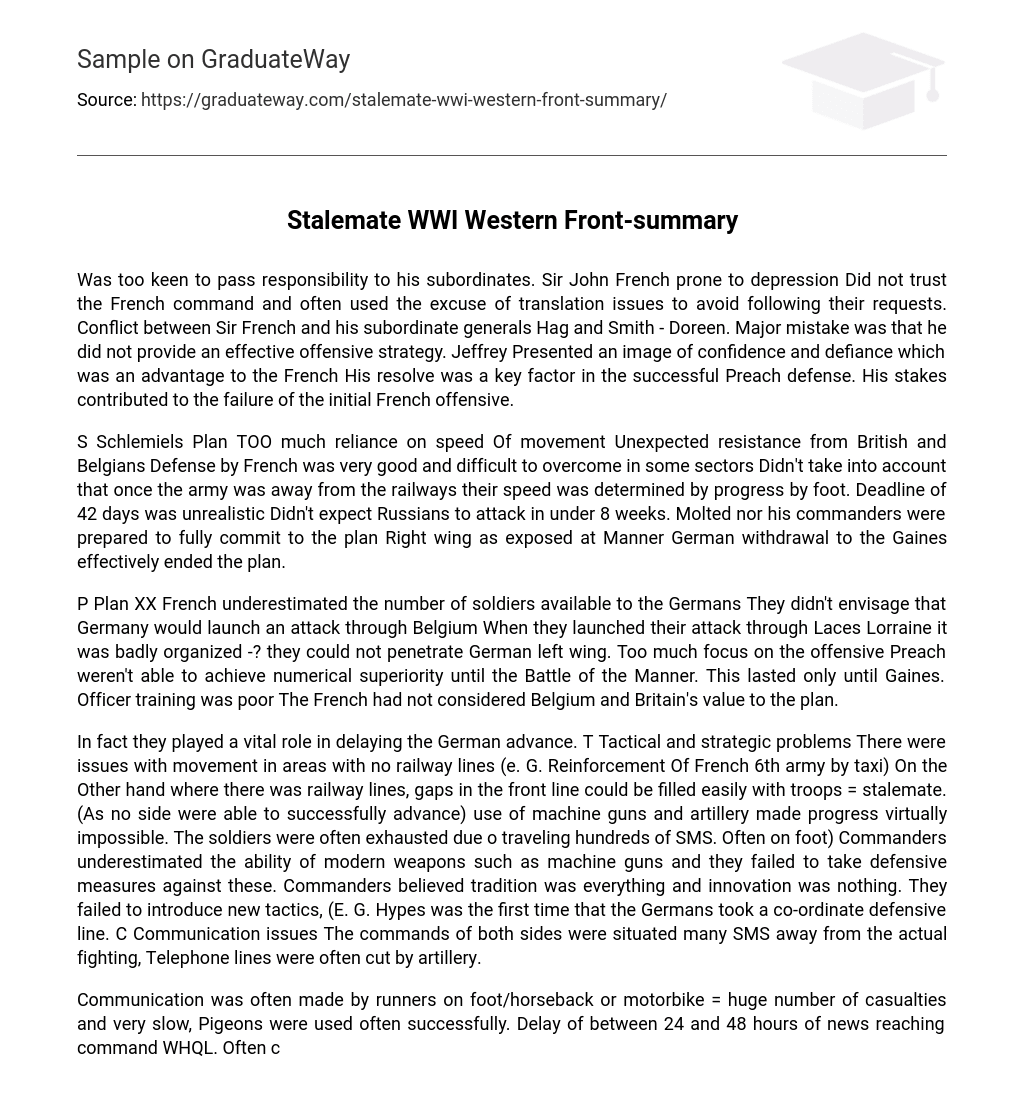Was too keen to pass responsibility to his subordinates. Sir John French prone to depression Did not trust the French command and often used the excuse of translation issues to avoid following their requests. Conflict between Sir French and his subordinate generals Hag and Smith – Doreen. Major mistake was that he did not provide an effective offensive strategy. Jeffrey Presented an image of confidence and defiance which was an advantage to the French His resolve was a key factor in the successful Preach defense. His stakes contributed to the failure of the initial French offensive.
S Schlemiels Plan TOO much reliance on speed Of movement Unexpected resistance from British and Belgians Defense by French was very good and difficult to overcome in some sectors Didn’t take into account that once the army was away from the railways their speed was determined by progress by foot. Deadline of 42 days was unrealistic Didn’t expect Russians to attack in under 8 weeks. Molted nor his commanders were prepared to fully commit to the plan Right wing as exposed at Manner German withdrawal to the Gaines effectively ended the plan.
P Plan XX French underestimated the number of soldiers available to the Germans They didn’t envisage that Germany would launch an attack through Belgium When they launched their attack through Laces Lorraine it was badly organized -? they could not penetrate German left wing. Too much focus on the offensive Preach weren’t able to achieve numerical superiority until the Battle of the Manner. This lasted only until Gaines. Officer training was poor The French had not considered Belgium and Britain’s value to the plan.
In fact they played a vital role in delaying the German advance. T Tactical and strategic problems There were issues with movement in areas with no railway lines (e. G. Reinforcement Of French 6th army by taxi) On the Other hand where there was railway lines, gaps in the front line could be filled easily with troops = stalemate. (As no side were able to successfully advance) use of machine guns and artillery made progress virtually impossible. The soldiers were often exhausted due o traveling hundreds of SMS. Often on foot) Commanders underestimated the ability of modern weapons such as machine guns and they failed to take defensive measures against these. Commanders believed tradition was everything and innovation was nothing. They failed to introduce new tactics, (E. G. Hypes was the first time that the Germans took a co-ordinate defensive line. C Communication issues The commands of both sides were situated many SMS away from the actual fighting, Telephone lines were often cut by artillery.
Communication was often made by runners on foot/horseback or motorbike = huge number of casualties and very slow, Pigeons were used often successfully. Delay of between 24 and 48 hours of news reaching command WHQL. Often caused confusion on the front line as orders were often given too late or were garbled. French probably had the best communication among themselves but communication With the BEE was not as good (often translation issues) There was often delay and confusion on the battlefield due to communication issues.





